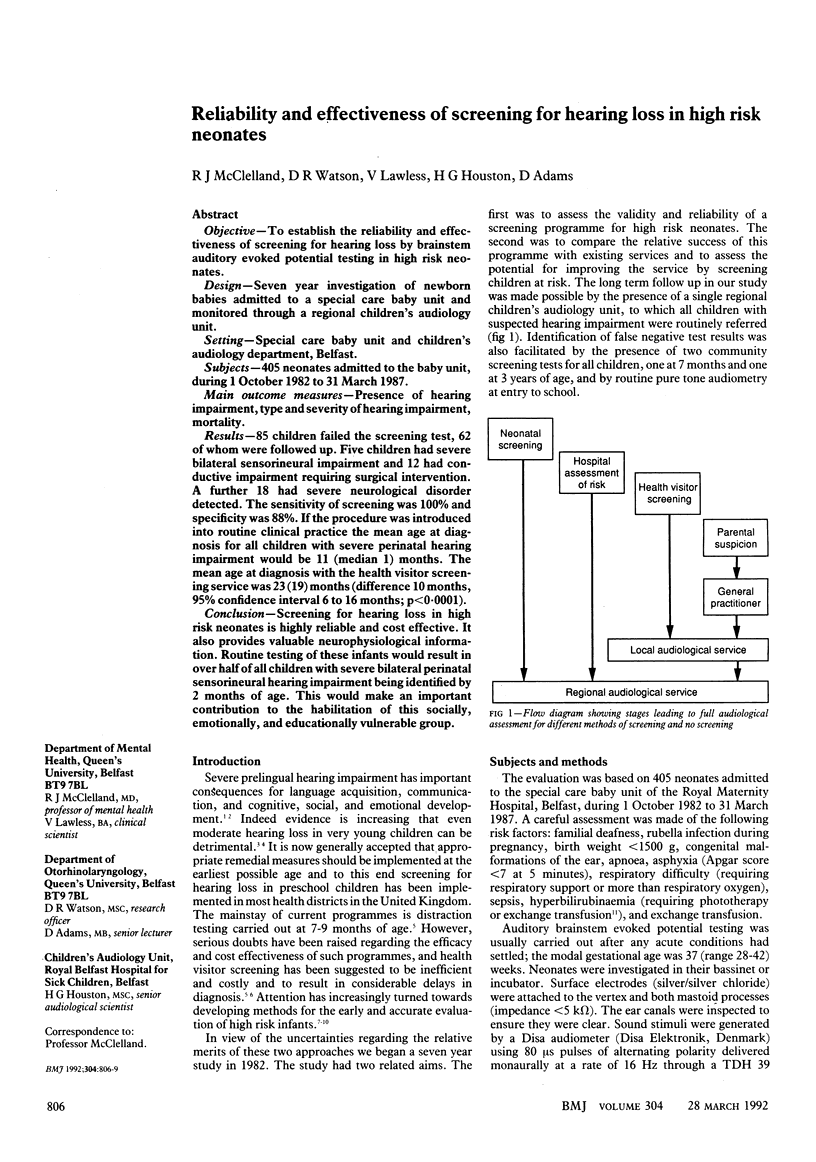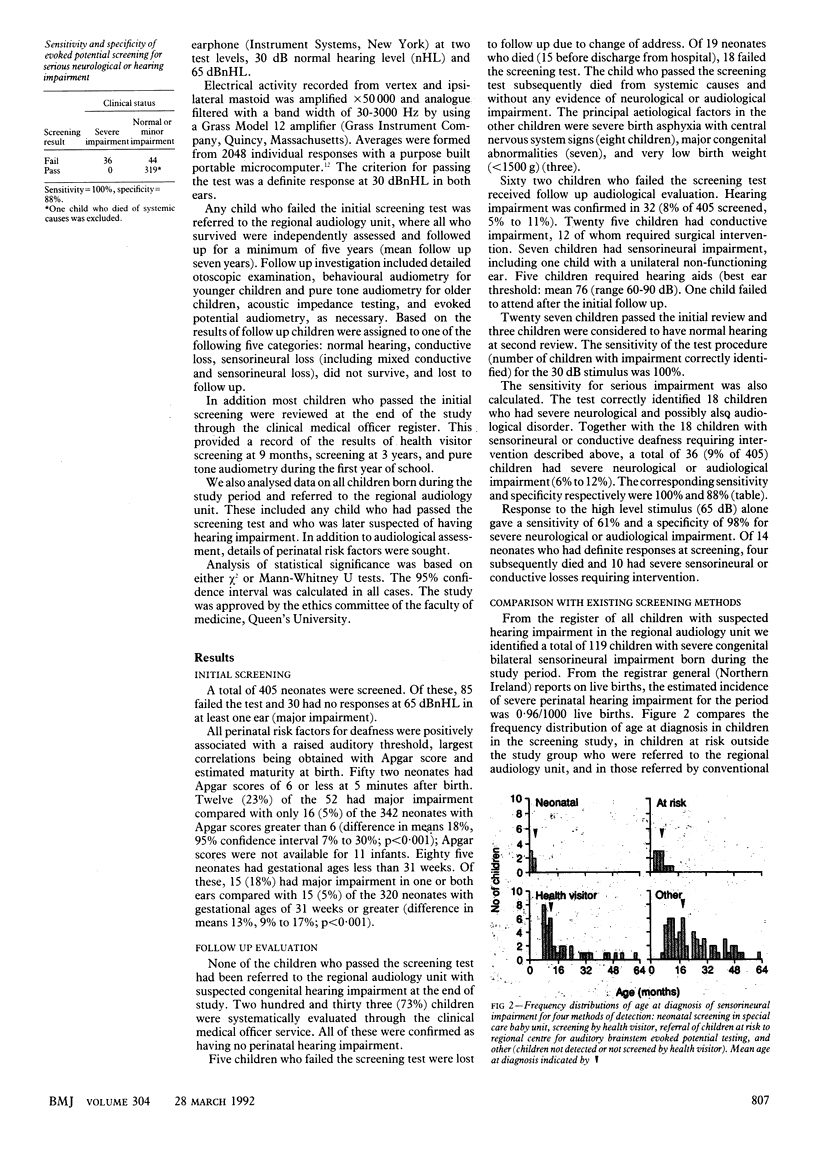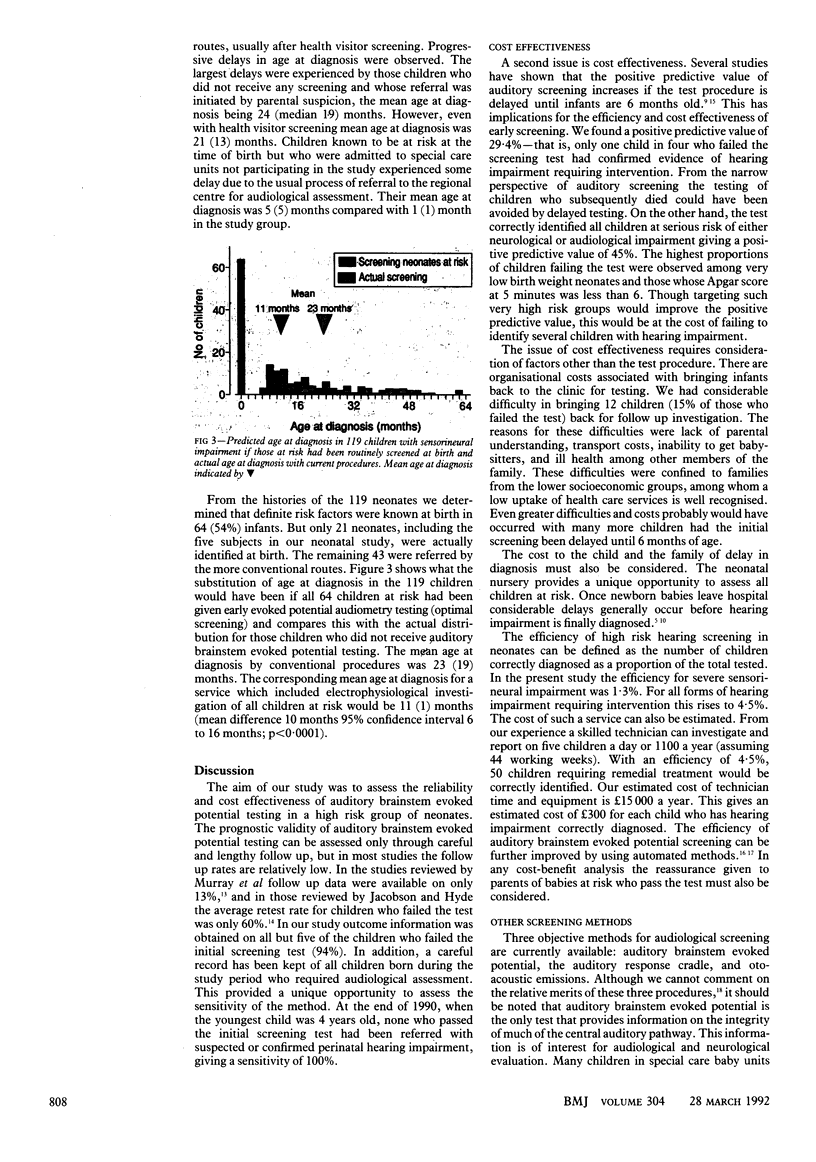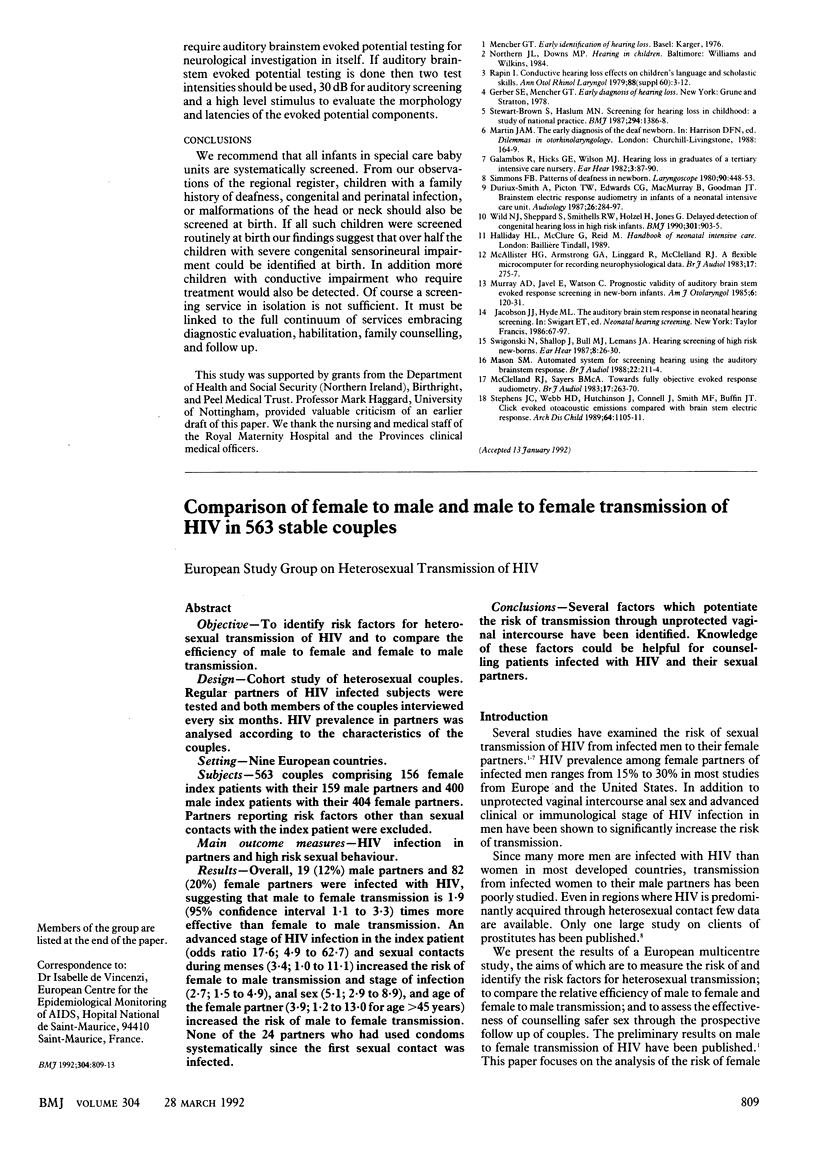Abstract
OBJECTIVE--To establish the reliability and effectiveness of screening for hearing loss by brainstem auditory evoked potential testing in high risk neonates. DESIGN--Seven year investigation of newborn babies admitted to a special care baby unit and monitored through a regional children's audiology unit. SETTING--Special care baby unit and children's audiology department, Belfast. SUBJECTS--405 neonates admitted to the baby unit, during 1 October 1982 to 31 March 1987. MAIN OUTCOME MEASURES--Presence of hearing impairment, type and severity of hearing impairment, mortality. RESULTS--85 children failed the screening test, 62 of whom were followed up. Five children had severe bilateral sensorineural impairment and 12 had conductive impairment requiring surgical intervention. A further 18 had severe neurological disorder detected. The sensitivity of screening was 100% and specificity was 88%. If the procedure was introduced into routine clinical practice the mean age at diagnosis for all children with severe perinatal hearing impairment would be 11 (median 1) months. The mean age at diagnosis with the health visitor screening service was 23 (19) months (difference 10 months, 95% confidence interval 6 to 16 months; p < 0.0001). CONCLUSION--Screening for hearing loss in high risk neonates is highly reliable and cost effective. It also provides valuable neurophysiological information. Routine testing of these infants would result in over half of all children with severe bilateral perinatal sensorineural hearing impairment being identified by 2 months of age. This would make an important contribution to the habilitation of this socially, emotionally, and educationally vulnerable group.
Full text
PDF



Selected References
These references are in PubMed. This may not be the complete list of references from this article.
- Durieux-Smith A., Picton T. W., Edwards C. G., MacMurray B., Goodman J. T. Brainstem electric-response audiometry in infants of a neonatal intensive care unit. Audiology. 1987;26(5):284–297. doi: 10.3109/00206098709081556. [DOI] [PubMed] [Google Scholar]
- Galambos R., Hicks G., Wilson M. J. Hearing loss in graduates of a tertiary intensive care nursery. Ear Hear. 1982 Mar-Apr;3(2):87–90. doi: 10.1097/00003446-198203000-00007. [DOI] [PubMed] [Google Scholar]
- Mason S. M. Automated system for screening hearing using the auditory brainstem response. Br J Audiol. 1988 Aug;22(3):211–213. doi: 10.3109/03005368809076454. [DOI] [PubMed] [Google Scholar]
- McAllister H. G., Armstrong G. A., McClelland R. J., Linggard R. Data acquisition in neurophysiology. A flexible microcomputer system for recording neurophysiological data. Br J Audiol. 1983 Nov;17(4):275–277. doi: 10.3109/03005368309081489. [DOI] [PubMed] [Google Scholar]
- McClelland R. J., Sayers B. M. Towards fully objective evoked response audiometry. Br J Audiol. 1983 Nov;17(4):263–270. doi: 10.3109/03005368309081487. [DOI] [PubMed] [Google Scholar]
- Murray A. D., Javel E., Watson C. S. Prognostic validity of auditory brainstem evoked response screening in newborn infants. Am J Otolaryngol. 1985 Mar-Apr;6(2):120–131. doi: 10.1016/s0196-0709(85)80050-8. [DOI] [PubMed] [Google Scholar]
- Rapin I. Conductive hearing loss effects on children's language and scholastic skills. A review of the literature. Ann Otol Rhinol Laryngol Suppl. 1979 Sep-Oct;88(5 Pt 2 Suppl 60):3–12. doi: 10.1177/00034894790880s502. [DOI] [PubMed] [Google Scholar]
- Simmons F. B. Patterns of deafness in newborns. Laryngoscope. 1980 Mar;90(3):448–453. doi: 10.1002/lary.5540900311. [DOI] [PubMed] [Google Scholar]
- Stevens J. C., Webb H. D., Hutchinson J., Connell J., Smith M. F., Buffin J. T. Click evoked otoacoustic emissions compared with brain stem electric response. Arch Dis Child. 1989 Aug;64(8):1105–1111. doi: 10.1136/adc.64.8.1105. [DOI] [PMC free article] [PubMed] [Google Scholar]
- Stewart-Brown S., Haslum M. N. Screening for hearing loss in childhood: a study of national practice. Br Med J (Clin Res Ed) 1987 May 30;294(6584):1386–1388. doi: 10.1136/bmj.294.6584.1386. [DOI] [PMC free article] [PubMed] [Google Scholar]
- Swigonski N., Shallop J., Bull M. J., Lemons J. A. Hearing screening of high risk newborns. Ear Hear. 1987 Feb;8(1):26–30. doi: 10.1097/00003446-198702000-00005. [DOI] [PubMed] [Google Scholar]
- Wild N. J., Sheppard S., Smithells R. W., Holzel H., Jones G. Delayed detection of congenital hearing loss in high risk infants. BMJ. 1990 Oct 20;301(6757):903–905. doi: 10.1136/bmj.301.6757.903. [DOI] [PMC free article] [PubMed] [Google Scholar]


